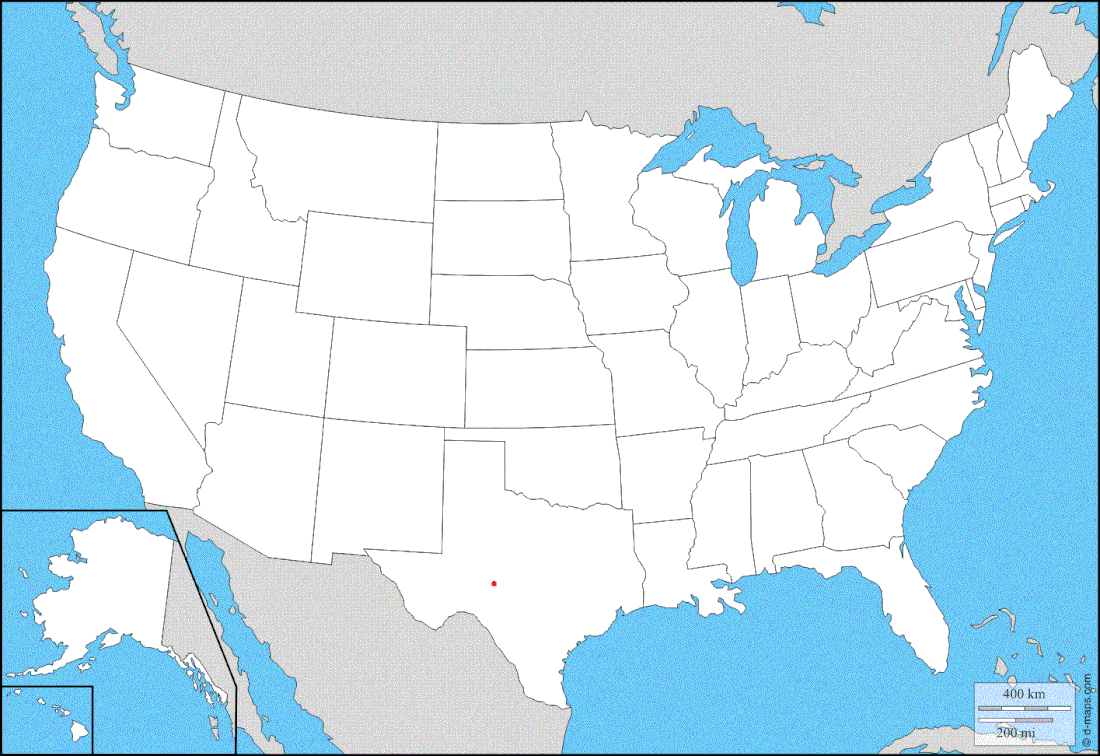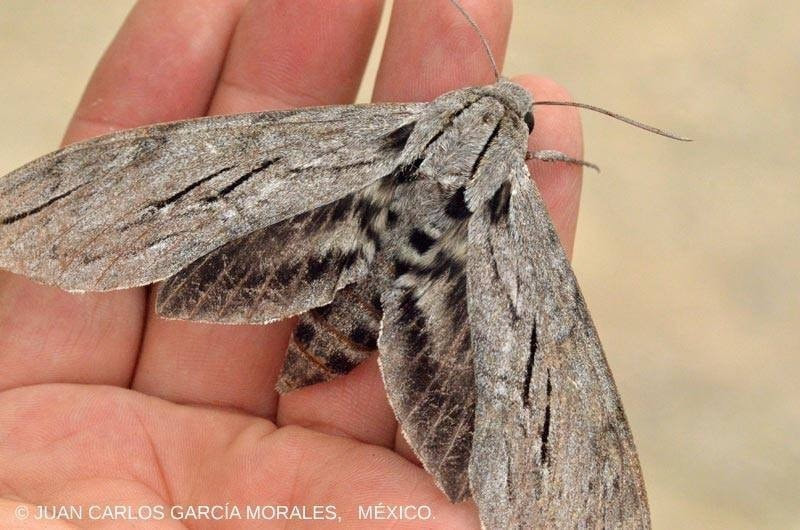|
Common Name: Leucophaeata Sphinx
Ecology and Life History: This moth is active throughout the year in Central and South America, and therefore could be a stray at any time of the year in Texas. In the USA, this species is only known from a single record in Texas. This species is likely attracted to light, as many other species in the genus Sphinx, are. This species is not sexually dimorphic, though like other Sphingidae, males likely have a thinner, pointed abdomen and females a larger, bluntly tipped abdomen. Eggs are likely laid on the leaves of hostplants. Very little is known about the biology of this species (2). Habitat and Searching for Larvae: {COMING SOON} Rearing Notes: {COMING SOON} Host plants: Click here to load this Caspio Cloud Database
Cloud Database by Caspio |
Adult Description: This is a very large Sphinx, with forewings measuring 62-75mm in length (2). The forewings are remarkably plain and gray in color. There are usually two small black streaks in the middle of the forewing. The thorax of this species is gray, with two black parallel lines in the center. The abdomen is gray in the middle, with black and white checkering on the sides, as in other members of this genus.
Larval Description L5: Another absolutely remarkable and unmistakable larva. It is quite large, and the ground color is a bright lime green. The spiracles are orange. The abdominal streaking is dark brown, with white on the bottom. The prolegs are brown and feature white stippling, which follows the brown abdominal streak up to the spiracles. However, the easiest way to distinguish this larva from other members of the genus, is the caudal horn. The brown, granulose caudal horn curls into a loop at the tip, so that the end of the caudal horn is touching the middle region of the horn. |
The gallery to the left contains photos of Sphinx leucophaeata adults. If you have a photo that you would like to submit to us, please contact us.
The gallery to the right contains photos of Sphinx leucophaeata larval and pupal stages. If you have a photo that you would like to submit to us, please contact us.
The gallery to the right contains photos of Sphinx leucophaeata larval and pupal stages. If you have a photo that you would like to submit to us, please contact us.






